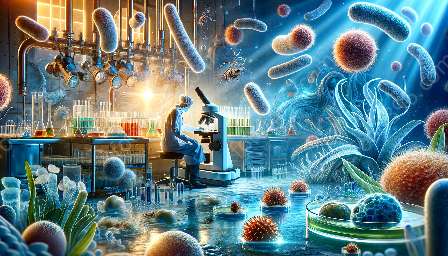Seafood microbiology and foodborne pathogens have a significant impact on seafood science. Understanding the methods for controlling microbial contamination in seafood is crucial for ensuring food safety and quality. This topic cluster explores various strategies and techniques aimed at preventing and managing microbial contamination in seafood.
Seafood Microbiology and Foodborne Pathogens
Microbial contamination in seafood occurs due to the presence of bacteria, viruses, parasites, and fungi. Seafood is an ideal medium for the growth of pathogens due to its nutrient content and moisture levels, making it susceptible to contamination if proper precautions are not taken. The presence of microbes such as Salmonella, Listeria, Vibrio, and Clostridium botulinum can pose serious health risks to consumers if consumed through contaminated seafood.
Understanding Seafood Science
Seafood science encompasses the study of the biological, chemical, and physical properties of seafood. It also involves understanding the various factors that affect the quality and safety of seafood products, including microbial contamination. By delving into the field of seafood science, researchers and industry professionals can develop effective methods to control and prevent the growth of harmful microbes in seafood.
Methods for Controlling Microbial Contamination
Several methods are employed to control microbial contamination in seafood, ensuring that the products are safe for consumption. These methods can be categorized into pre-harvest and post-harvest interventions:
Pre-harvest Interventions
- Aquaculture Management: Proper management of aquaculture systems can help minimize the risk of microbial contamination in seafood. This includes maintaining optimal water quality, managing feeding practices, and monitoring the health of aquatic organisms to prevent the proliferation of pathogens.
- Hygiene and Sanitation: Implementing strict hygiene practices in seafood farming environments helps reduce the potential for microbial contamination. Sanitization of equipment, facilities, and personnel training on proper handling and hygiene protocols play a crucial role in preventing contamination before harvesting.
- Water Quality Management: Monitoring and maintaining water quality in aquaculture systems is essential to minimize the risk of contamination. Regular testing for microbes and pollutants in the water can help prevent contamination of seafood during the pre-harvest stage.
Post-harvest Interventions
- Temperature Control: Proper temperature management during processing, storage, and transportation of seafood is critical in controlling microbial growth. Cold storage and refrigeration help inhibit the proliferation of pathogens and prolong the shelf life of seafood products.
- Chemical Treatments: Various chemical interventions, such as the use of antimicrobial agents and food preservatives, can be employed to reduce microbial contamination in seafood. However, careful consideration must be given to the permitted use and concentrations of these chemicals to ensure food safety and compliance with regulations.
- Modified Atmosphere Packaging (MAP): Packaging seafood in controlled atmospheric conditions can delay the growth of spoilage and pathogenic microorganisms. Modified atmosphere packaging alters the composition of the surrounding air to preserve the quality and safety of seafood products.
- High-Pressure Processing (HPP): HPP is a non-thermal food preservation method that uses high pressure to eliminate pathogens in seafood without compromising its quality. This technology effectively controls microbial contamination while extending the shelf life of seafood products.
Advancements in Seafood Safety Technologies
As technology continues to evolve, advancements in seafood safety technologies have provided innovative solutions for controlling microbial contamination. Rapid detection methods, such as molecular techniques and biosensors, enable the quick and accurate identification of pathogens in seafood, allowing for timely intervention and mitigation of potential risks to consumers.
Conclusion
Controlling microbial contamination in seafood is essential to ensure the safety and quality of seafood products. By understanding the impact of seafood microbiology and foodborne pathogens, as well as the principles of seafood science, industry professionals and researchers can implement effective methods for preventing and managing microbial contamination. Through pre-harvest and post-harvest interventions, as well as advancements in seafood safety technologies, the industry can uphold high standards of food safety and deliver safe, nutritious seafood to consumers.

